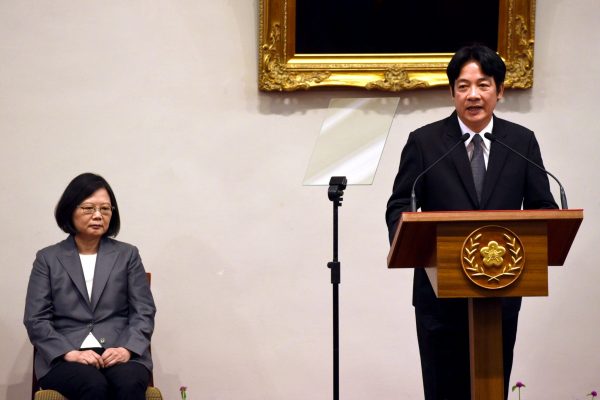In the following month, Tsai’s personal approval rating dropped to 29.8 per cent, making her a less popular leader than US President Donald Trump in the same period. While Tsai’s approval recovered to 46.4 per cent by the end of September, the figures remain well below her May 2016 post-election popularity high of 70 per cent.
On the one hand, shifts in preferences are normal in democracies as mid-term campaigns often motivate voters to vote against the ruling party in order to achieve a balance in policies. But the decrease in party affiliation should be alarming for Taiwan’s two major parties. The number of people who feel strongly affiliated to either the DPP or the KMT is declining, while undecided or swing voters are increasing. This usually has two effects on election day: weak voter turn-out or voters that decide at the polling booth.
As a consequence, both parties could face even tougher electoral battles in the future, and these will likely occur on two fronts. First, the parties must manage cross-Strait issues as both a foreign and a domestic policy issue. The majority of voters identify solely as ‘Taiwanese’ (as opposed to ‘Chinese’ or ‘both Taiwanese and Chinese’) but also support the cross-Strait status quo. This makes it extremely difficult for either party to balance demands from Beijing with the demands of a large bloc of voters who have no party affiliation but identify as Taiwanese and believe in the cross-Strait status quo.
The second challenge is managing domestic concerns about Taiwan’s economy and social policies. Tsai’s administration is facing a backlash over plans to overhaul the pension system, and controversial labour reforms such as moving towards a five-day working week. As her administration eyes the mid-term November 2018 local elections and the January 2020 presidential and legislative elections, Tsai’s moderation and attempts to address lower voter satisfaction led to a cabinet reshuffle in September. Notably, Tsai appointed Lai Ching-te, the popular former mayor of Tainan, as Premier to replace incumbent Lin Chuan. While surprising many with his previous comments about his ‘affinity towards China’, Lai later clarified his view that a pro-independence stance does not exclude friendlier relations with mainland China. As Premier, Lai has sworn to focus on increasing industrial investment and improving the economic and social well-being of Taiwanese citizens.
As previously argued, the expectations placed on President Tsai are unrealistically high. Like her predecessors, Tsai has moved to diversify Taiwan’s economy due to its heavy reliance on its semiconductor industry. Known as the ‘5+2 industrial innovation development plan’, Tsai has promoted five industries — green energy, smart machinery, the internet of things, biomedicine and defence — and tied these industries to local districts. But like in the past and despite the need for change, the implementation and uptake of diversification has been slow.
Tsai has also introduced a ‘forward-looking infrastructure development plan’ to expand basic infrastructure work and boost domestic demand. Taiwan’s GDP is now expected to grow by 2 per cent this year — up half a percentage point from 2016 — while exports are expected to rise by 8 per cent. Cross-Strait trade had also increased to US$133 billion by April 2017. Further, Tsai has established a US$3.5 billion infrastructure and development fund to support her Southbound Policy in an effort to diversify Taiwan’s international partners.
Still, the fact remains that ‘governing Taiwan is not easy’. Fortunately, Tsai is a strong leader. She has demonstrated adaptability, provided a robust platform for reform, and aptly handled the use of Taiwan as a pawn of Trump’s foreign policy towards China. In her 2017 National Day address she stated that ‘as long as we can resolve problems one step at a time, we will start to see change. This will lead to a better Taiwan’.
Many of these ‘step-by-step’ reforms to address systemic challenges will take years to succeed. Tsai will need to reconcile the diverse interests of her own party with the expectations of her constituency. Unfortunately for Tsai, her achievements will be measured in the short term by an increasingly belligerent Beijing and an increasingly disenfranchised electorate.
Sheryn Lee is an Associate Lecturer in the Department of Security Studies and Criminology, Macquarie University, Sydney.


Tsai is not suffering “mid-term blues”. Such drops in approval are normal and unremarkable for a Taiwan president and should not be taken as indicative of anything. Recall that Ma was elected to a second term with much lower approval ratings than Tsai’s current ones.
The egregious comparison to Trump not only indicates that the author is ignorant of the proper context, but is simply trolling.
In any case the numbers fluctuate from poll to poll and week to week. In Sept Tsai’s approval ratings bounced up. According to the Taiwan Public Opinion poll in Sept — the same poll organization Lee selectively quotes to establish the narrative of Tsai’s slumping unpopularity — has her above 40per cent in September.
http://www.taipeitimes.com/News/front/archives/2017/09/18/2003678652
We could easily cherry pick another poll that has Tsai at 49per cent
http://www.taipeitimes.com/News/front/archives/2017/10/17/2003680492
I have discussed this extensively on my blog. In the last reliable and consistent poll — recall that NCCU is a deep blue institution — the TISR Poll, Tsai was already in the 30s in October of last year. This is perfectly normal as I noted over a year ago in a column for Taiwan news.
http://www.taiwannews.com.tw/en/news/3041782
As I pointed out in a long blogpost on an LA Times hit piece on Tsai by Ralph Jennings…
http://michaelturton.blogspot.com/2017/07/la-times-runs-hit-piece-on-tsai-ing-wen.html
What this artificial narrative of Tsai’s perpetually slumping popularity really means is that Tsai’s popularity has been hanging around 30 for a year now. Perfectly normal for a Taiwan president.
It would have been great if that context had been supplied in this article, instead of the idiotic trolling reference to Trump. But why do homework on a complex topic when you can just go with the narrative conventions of the media?